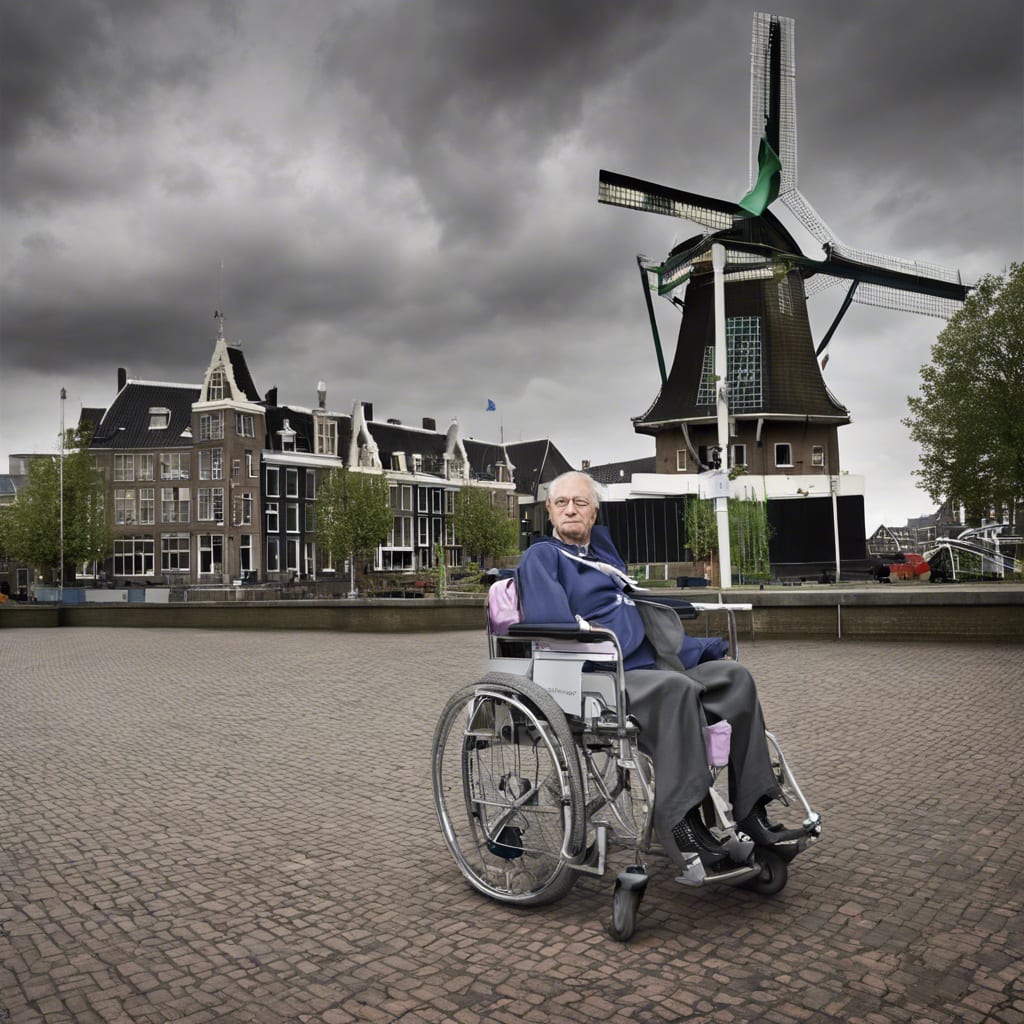Content warning
This story may contain sensitive material or discuss topics that some readers may find distressing. Reader discretion is advised. The views and opinions expressed in this story are those of the author and do not necessarily reflect the official policy or position of Vocal.
Adjusting Morals and Independence: The Dutch Way to deal with Helped Kicking the bucket
Lawful, Moral, and Social Components of Killing in Dutch Medical services

The Netherlands has for some time been at the front of moderate social arrangements, and one of its most argumentative regulations is the authorization of killing. This regulation, established in 2002, permits people experiencing serious sicknesses to pick a stately finish to their lives. Regardless of its disputable nature, the killing system in the Netherlands is nowhere near clear, being represented by rigid guidelines to guarantee it is managed morally and sympathetically.
The Legitimate System
Willful extermination in the Netherlands is legitimate under severe circumstances. Just allowed for people are encountering agonizing enduring without any possibility of progress, commonly because of a hopeless illness. The interaction includes thorough examination and a progression of balanced governance to guarantee that it isn't abused. The essential model is that the solicitation for killing should come from the patient willfully and over and again, with practically no outside strain or compulsion. This guarantees that the choice is genuinely the patient's own and not affected by others.
The Instance of Joara Ter Beek
The tale of Joara Ter Beek, a youthful Dutch lady, exposes the intricacies and human parts of this regulation. Three and a half quite a while back, Joara applied for killing. She had been experiencing serious dysfunctional behaviors that had not been eased in spite of 10 years of treatment. Her condition had prompted significant mental pain, making life unendurable for her. Subsequent to getting through an extensive course of assessments and conventions, she was at last conceded consent to end her experiencing the week before.
Joara's case highlights the way that willful extermination isn't allowed daintily or quickly. The interaction included various phases of appraisal by various clinical experts, including physical and emotional well-being assessments and broad advising. This is to guarantee that all potential choices have been investigated and that the choice is made with full consciousness of its ramifications.
Separating Killing and Self destruction
A typical misinterpretation is that willful extermination and self destruction are indistinguishable. In any case, they are in a general sense different in both idea and execution. Self destruction is a self-caused demise frequently did indiscreetly and alone, regularly determined by intense mental trouble. Interestingly, willful extermination is a restoratively helped demise, embraced after intensive thought and broad conferences with medical care experts.
The Dutch killing regulation commands that the patient's experiencing should be terrible and without any desire for development, whether physical or mental. This experiencing should be affirmed by no less than two doctors, guaranteeing that the solicitation depends on real and hopeless circumstances. Moreover, the patient's psychological state is painstakingly assessed to affirm their ability to go with an educated choice.
The Strategy
When a patient is supported for killing, an exceptionally controlled and merciful cycle follows. On the designated day, a clinical group, including a doctor and a medical caretaker, visits the patient at their home. The technique starts with the organization of a soothing, which instigates rest. When the patient is in a profound rest, a medication is given to stop the heart, guaranteeing a quiet and effortless passing.
This calculated methodology highlights the consideration and regard for the patient's respect in the interim. The clinical group's presence guarantees that the methodology is led with proficient oversight, limiting any potential for intricacies and giving a feeling of consolation to the patient and their friends and family.
Moral and Social Ramifications
The act of willful extermination brings up significant moral and social issues. Pundits contend that it debases human existence and can be an elusive slant toward normalizing passing as an answer for misery. There are additionally worries about the potential for misuse, particularly among weak populaces like the old or crippled.
Allies, then again, fight that killing is a merciful reaction to immovable misery. It offers a feeling of control and respect to people confronting terminal sicknesses or extreme, untreatable agony. For some, the choice of killing gives a type of help, realizing that they have a decision to end their experiencing in their own particular manner.
The killing regulation in the Netherlands is a demonstration of the country's obligation to individual privileges and humane medical care. While profoundly questionable, it is additionally fastidiously controlled to guarantee it fills its expected need: to give alleviation to those in excruciating affliction. The instance of Joara Ter Beek features the law's intricacy and the significant effect it can have on people confronting persistent and hopeless agony. As discussions around willful extermination proceed with around the world, the Dutch model offers a basic point of view on offsetting moral contemplations with the requirement for humane finish of-life care.
About the Creator
Enjoyed the story? Support the Creator.
Subscribe for free to receive all their stories in your feed. You could also pledge your support or give them a one-off tip, letting them know you appreciate their work.






Comments
There are no comments for this story
Be the first to respond and start the conversation.